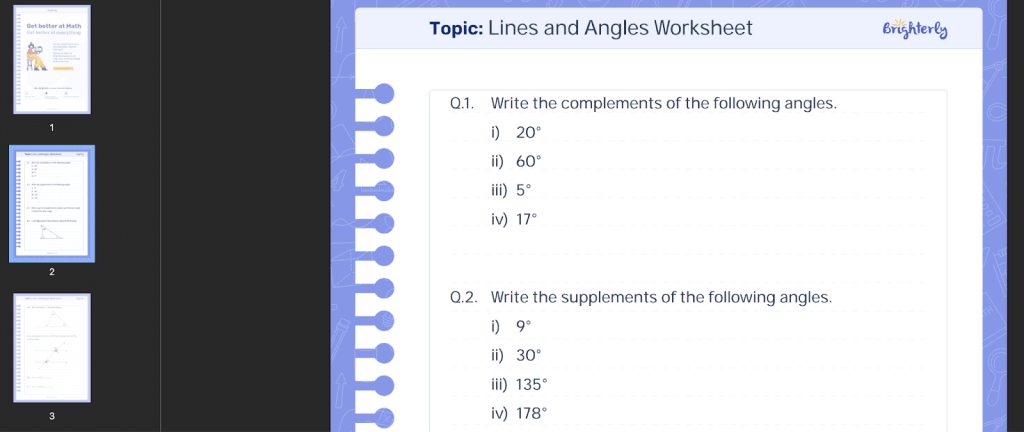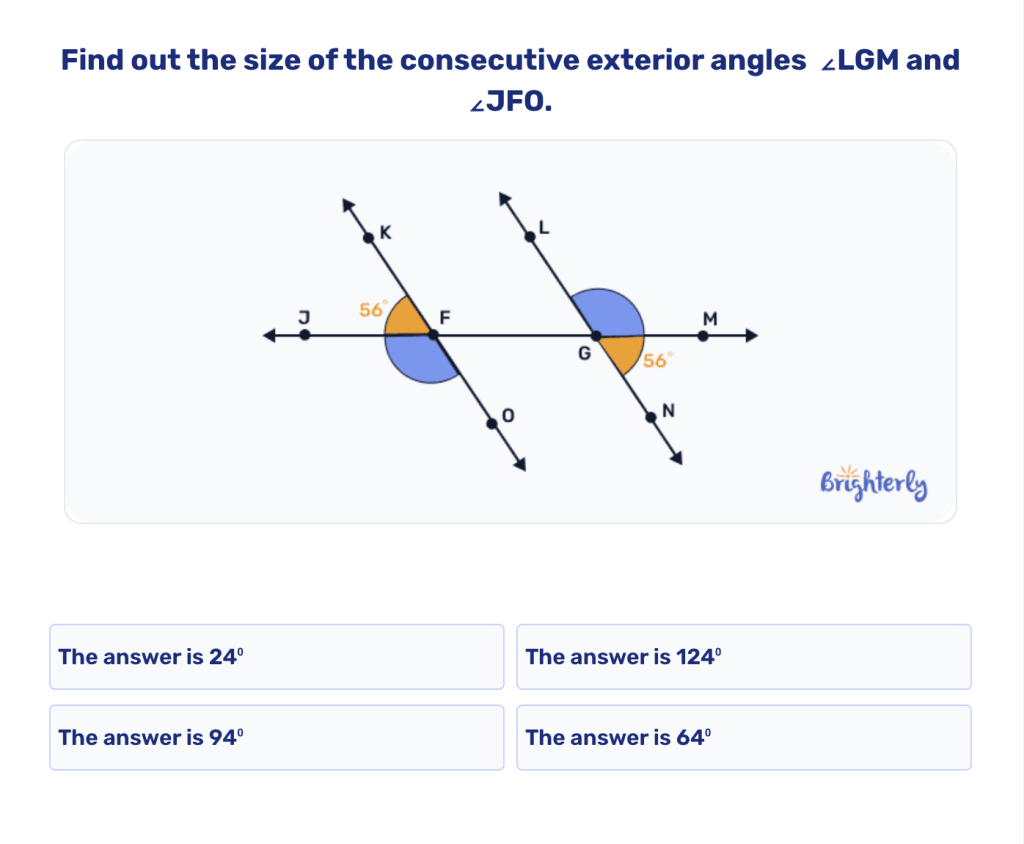Lines and Angles Worksheets
Updated on July 22, 2025
Lines and angles are key elements of geometry that kids will be introduced to from 4th grade onwards – support their learning journey with the lines and angles worksheet.
These lines and angles worksheets PDF get children to both measure lines and angles and answer word-based problems to ensure they understand lines and angles comprehensively.
Angles and lines worksheet: Examples

Through the use of a range of puzzles, games and activities focused on lines and angles, each angles and lines worksheet helps children in measuring and understanding these key geometric features.
Lines and angles worksheet [free download]
These free, printable worksheets couldn’t be easier to access. Simply download the PDF documents and you’re good to go! We recommend printing the lines and angles worksheet off for a hands-on activity, but if you can’t do that, they’re still excellent as a digital resource.
More lines and angles worksheets
- Parallel and perpendicular lines worksheets
- Parallel line and transversals worksheets
- Pairs of angles worksheets
- Types of angles worksheets
Once your child has completed these worksheets, they can move into more focused worksheets around parallel and perpendicular lines, pair of angles and different types of angles, including right, adjacent and acute angles.
Benefits of a lines and angles worksheet PDF
- Addressing the topic from multiple perspectives
- Supporting independent learning
- Hands-on activities
- Graduated learning curve
- Created by highly qualified experts
Geometry lines and angles worksheet – benefit #1: Addressing the topic from multiple perspectives
These lines and angles worksheets free help kids understand lines and angles fully by addressing them from many different perspectives. This covers supplementary and complementary angles, linear lines and angles, using vertical and horizontal lines, intersecting lines and much more.
Note: By giving children a comprehensive overview of these geometric features, there are no gaps left in their knowledge. This helps children master the topic.
Benefit #2: Lines and angles worksheet with answers PDF supporting independent learning
Each lines and angles worksheet with answers PDF contains an answer sheet, which offers many benefits to children. One benefit is that it supports independent learning skills. Kids can complete these lines and angles worksheets without external help, building confidence and self-sufficiency.
Types of lines and angles worksheet – benefit #3: Hands-on activities
As well as word problems and equations, the lines and angles worksheet PDF contains a range of hands-on activities. This includes measuring opposite angles and straight lines and working out missing angles, which offers variety to keep kids engaged and educated.
Note: Children who aren’t exposed to hands-on learning activities are 1.5 times more likely to fail a course, according to a Psychological and Cognitive Sciences journal.
Lines and angles worksheet – benefit #4: Graduated learning curve
One thing you’ll notice about each lines and angles worksheet with answers is how they become progressively more challenging. By starting off with straightforward puzzles and math problems, and adding progressively more difficult ones, like finding corresponding angles, as children learn, children actively improve their knowledge.
Lines and angles worksheets PDF free – benefit #5: Created by highly qualified experts
Every Brighterly geometry lines and angles worksheet is created by one of our highly qualified tutors. Our thorough vetting process means that only the most qualified and experienced tutors will teach your children. This gives you confidence that these learning materials are high-quality.
Note: Brighterly’s tutors are beloved by parents and children alike, thanks to their expertise, positive attitude and ability to boost kids’ confidence. Read tutor reviews.
Lines and angles worksheets: Practice
Once your child has finished angles and parallel and perpendicular lines worksheets, they can then take on more challenging tasks.
The next natural step in their education journey is taking our practice test questions. These quizzes allow kids to self-assess their work and prepare for school exams, offering dual benefits.

Get stuck into our consecutive angles practice problems today! We offer many more geometry worksheets in addition to these worksheets. Explore full range of geometry worksheets now.









